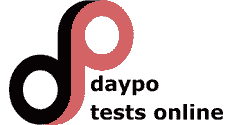AICLE EXAMEN ENERO 2025 (UNED)
|
|
Título del Test: AICLE EXAMEN ENERO 2025 (UNED) Descripción: Examen AICLE enero 2025 con las respuestas del ED |



| Comentarios |
|---|
NO HAY REGISTROS |
|
What do we understand by age-appropriate content?. Materials that are suitable for people of certain age. Content designed only for a specific subject. Content that is universally suitable for all age groups. What do you understand by CLT?. A methodology that focuses on language accuracy, ensuring learners master syntax and morphology before engaging in communicative activities. A learner-centred approach that prioritizes meaningful communication and authentic language use. An instructional strategy that emphasizes translation and direct instruction in the target language to build comprehension skills. What do you understand by cross-curricular activities?. They refer to extracurricular events and programs organized outside formal classroom settings. They are integrated educational approaches that connect concepts, skills, and themes across multiple disciplines to provide students with a holistic learning experience. They are teaching strategies that focus on reinforcing foundational knowledge within a single subject. The implementation of CLIL in Spain began. in 1992 through a ministerial order. in the late 1990s without a national framework. in the early 2000 with immediate effect. What is a linguistic register?. It refers to the variations in language use determined by context, purpose, and audience. It is a fixed set of words and phrases unique to a particular dialect, used consistently regardless of social or contextual factors. It refers exclusively to the technical jargon of specialized fields, ignoring the broader sociolinguistic dimensions of formality and audience adaptation. Why is translanguaging a pedagogical tool?. Because it leverages students' full linguistic repertoires, allowing them to use all their language skills flexibly to enhance understanding. Because it replaces traditional instruction in the target language, requiring students to switch exclusively to their first language for all classroom activities and assessments. Because it emphasizes strict separation of languages in the classroom, ensuring students learn each language in isolation to avoid confusion and promote linguistic purity. What do we mean by play-based activity?. It refers to structured or semi-structured tasks designed to facilitate learning through active engagement, exploration and creativity. It refers to free, unstructured play without any predefined goals or educational intentions. It is limited to physical games and sports, focusing only on improving motor skills and physical fitness. When was the term "translanguaging" first introduced as a pedagogical tool?. In the 1980s. In the late 1990s. In the early 2000s. The lwa taht ascertained the general organisation and pedagogial principles of Early Childhood Education (ECE) was: Law 2/2006 on Education (LOE) amended by Law 3/2020 (LOMLOE). Law 95/2006 on Education (LOE) amended by Law 3/2022 (LOMLOE). Law 2/2006 on Education (LOE) amended by Law 95/2022 (LOMLOE). A great reference for the second cycle of ECE is the Bilingual Education Programme of the. British Council. UK Council. British Committee. Learning situations should integrate the three areas of the level and perform different: Tasks and activities. Tasks, excluding activities. Activities, excluding tasks. Klewitz (2021) proposes five sections of questions to organise the collaboration in the teaching team including content, cognition, communication, culture and. Context. Connection. Creativity. "Circle Time" is best described as an activity in which. The class sits on a carpet or on the floor and informal interaction is encouraged. Children are sitting at their desks and work on task boxes. Children can sit anywhere they like and choose which activities they prefer to do. Getting learners to provide information rather than the teacher giving it is known as. Elicitation. Formulaic speech. Expansion. Patterning, sequencing, sorting, labelling, matching, building, lacing are examples of activities that can be done through. Daily routines. Task boxes. Storytelling. Which of the following procedures is the most recommended by Ioannou-Georgiu & Verdugo (2011) for storytelling in the CLIL classroom?. Preparing pre, while and post story activities. Rehearsing codeswitching and recasting. Using puppets and visuals during the story. Hetero-evaluation involves the assessment of individuals by: Agents from different statuses. Agents from different centres. Agents from different gender. Multilinguals could be simultaneous multilinguals or. Sequential multilinguals. Native multilinguals. Alternative multilinguals. In addition to classroom observations, collaborative activities, and self-assessment, assessment methods could include: Portfolios. Portmanteaus. Portulacas. An assessment rubric uses descriptive terms like "thorough", "partially complete", or "misunderstood" for: Descriptions of levels of performance. The use of descriptive objectives. The differentiation of basic knowledge. |





